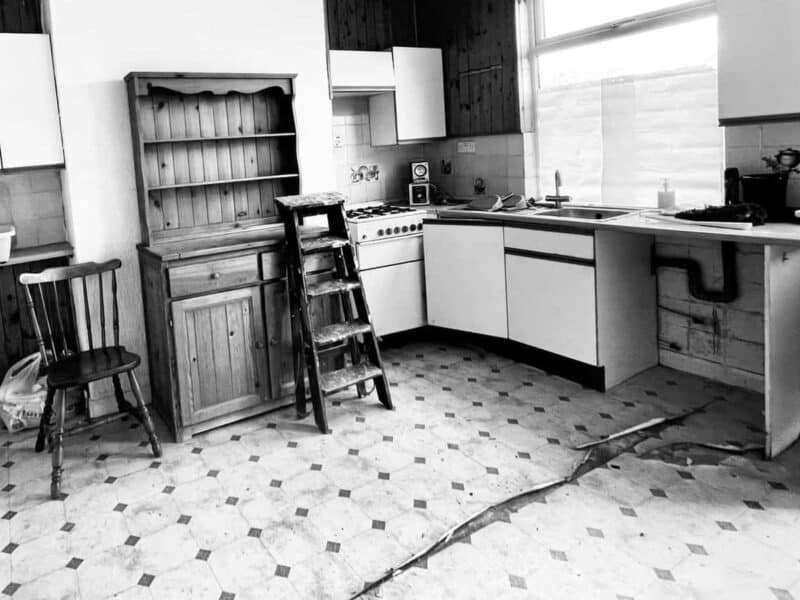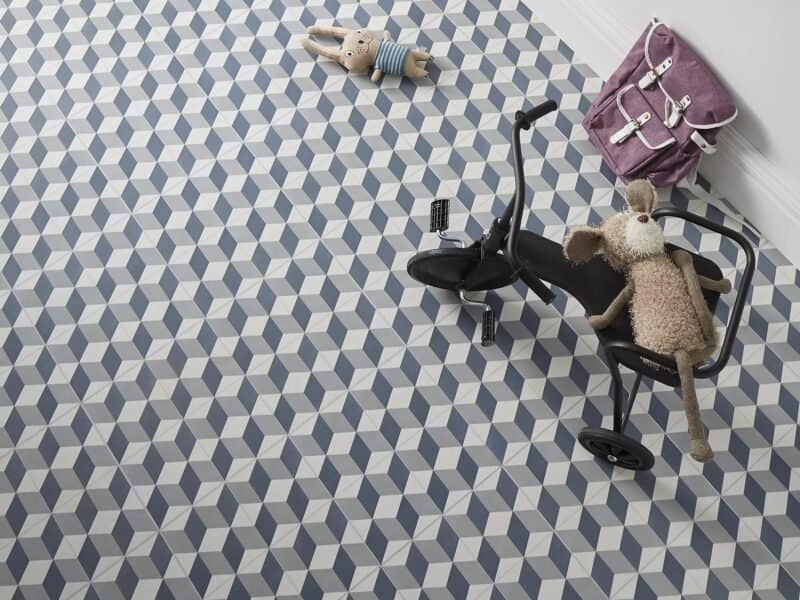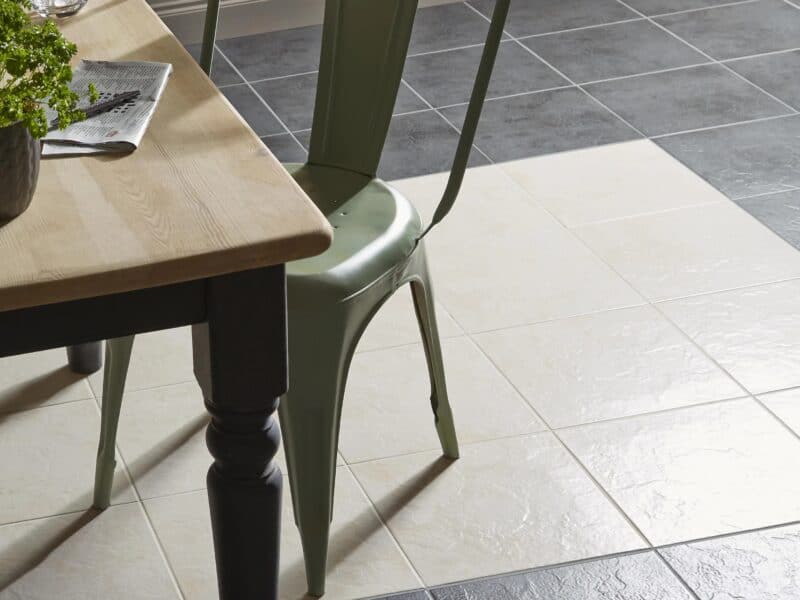
People are frequently confused by vinyl and linoleum flooring, thinking that they are essentially the same thing.
This could partly be to do with similarity in appearance and also partly because vinyl effectively ‘replaced’ linoleum floors in the 1950s, thereby giving the impression that it is a modern, upgraded version of the same thing.
In fact, the two types of flooring are fundamentally very different, although they do have similar practical properties. In both cases, they offer soft, durable flooring that is quiet and easy to clean and maintain, as well as being available in a variety of colours and styles.
Synthetic vs. Natural
One of the key differences between them is that Vinyl is completely made up of a synthetic, petroleum-based material.
It is composed of a sandwich of layers, starting with a vinyl (or felt) backing and is usually overlaid with a top layer of urethane which helps to resist scuff-marks, scratches and stains, as well as repelling dirt and moisture.
Good quality vinyl is one of the most durable forms of flooring available and can withstand denting from heavy objects remarkably well.
Vinyl is also popular because it can replicate the look of other types of hard surfaces, such as tile and wood, but at the same time, still remaining easy to Clean and Maintain, quiet and cushioning underfoot and most of all, affordable.
Linoleum, on the other hand, is completely natural. It was invented in the late 1800s and is derived from linseed oil (hence its name) which is extracted from flax seeds and then dried out and ground into a fine powder, called ‘linoleum cement’. This is then mixed with fine plant material, such as ground cork, wood flour and pine resins and then combined with a jute fibre backing.
As society becomes more environmentally-conscious, linoleum is now making a comeback as a preferred natural option for flooring as it is composed of entirely natural materials from highly sustainable sources and thus is 100% recyclable.
This means all of the leftover or waste products from its production can be re-used in future production. Its main source material also comes from flax seed which is a renewable resource.
There is the general belief that linoleum is a much more environmentally-friendly choice of flooring as it is made from sustainable natural materials (not synthetic, manufactured ones) and thus does not produce waste emissions harmful to the environment.
However, research conducted by the U.S. Department of Commerce’s National Institute of Standards and Technology concluded that overall, the manufacture, installation and life-time use of vinyl actually has a lower or equal negative impact on the environment than similar natural materials, such as linoleum.
This is due to its durability and long use, thereby reducing the amount of replacement needed and thus waste materials generated.
The studies also claim that vinyl actually uses less energy consumption in its manufacture, transportation and installation. Lastly, it seems that scrap vinyl is also often recycled into new vinyl.
Durability
If it is properly maintained, linoleum floors are very durable and hard-wearing and will last for decades. It is argued that one reason for its durability is because colour is embedded throughout its construction whereas in vinyl floors, the colours and patterns are simply printed onto the surface and then protected by a urethane top layer.
However, again, studies have shown that vinyl flooring is one of strongest and most durable floor coverings after 10 years of use and that its top urethane layer is extremely successful at protecting it from scratching, staining, denting and wearing of colour/patterns.
Conversely, the studies claim that natural products such as linoleum and wood tend to fade after exposure to natural light and to be more susceptible to disintegration and decay, following exposure to moisture and other household products.
Health Concerns
One of the main advantages claimed for linoleum is its health benefits, again due to its natural properties. It is believed that homes with linoleum flooring have a healthier living environment as it does not emit volatile gases and other toxic chemicals. In addition, linoleum is recommended as it is believed to be hypoallergenic and naturally anti-static which means that it easily repels dust, dirt and other allergenic particles.
This makes it easier to clean and ideal for people with asthma or allergies. Linoleum is even believed to have naturally antibacterial properties.
However, the same studies about vinyl flooring mentioned earlier seem to show that the manufacture and use of vinyl actually emits less toxic chemicals than other types of flooring, even natural ones like linoleum.
In addition, as vinyl is more resistant to moisture, it is believed to be more likely to be sterile and less allergenic. Lastly, vinyl’s higher fire resistance is also an advantage.
In Conclusion?
As a final point, it must be mentioned that vinyl is often preferred over linoleum because of its easy and low cost installation; in fact, many forms come with a ready ‘peel-and-stick’ backing and thus, it is a popular choice for DIY enthusiasts.
However, overall, it appears that both types of flooring have their equal advantages and benefits and it is really a case of conducting your own research and analysis to determine the type that is more suitable to your flooring needs.


